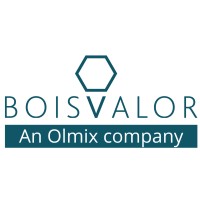The 2018 Poultry Science Association Annual Meeting (San Antonio, Texas) was the best spot for Olmix Group to share its latest work to combat fumonisins, most occurring mycotoxins worldwide
The San Antonio Marriott Rivercenter (Texas, USA) opened its doors last July to hold a new edition of the Poultry Science Association Annual Meeting, which brought together more than 1,000 scientists, educators, extension specialists and other professional experts to discuss and exchange the latest trends on poultry research and production.
Among this qualified audience, Olmix Group had the opportunity to deliver a scientific lecture on one of the trendiest matters affecting the poultry sector not only in America, but all round the world: how to manage contamination by fumonisins, most occurring mycotoxin.
“Fumonisins are very frequently found in South America and their occurrence in the US has been increasing in the last years. A recent survey highlighted that, in South America, 94.4% of the feeding stuff samples analyzed between 2013 and 2016 were contaminated with fumonisins, making it the most occurring mycotoxin in the area. This represents a significant threat for animal performance. After these results, Olmix Group conducted a study in order to evaluate the capacity of an algae-clay based product (MT.X+) to manage fumonisin risk in poultry production”, Mrs Marie Gallissot, Olmix Group’s For Feed Product Specialist, explained during the conference.

Mrs Marie Gallissot delivered a technical lecture.
Olmix Group, along with several partners, implemented three trials, all of them with outstanding results:
- The first trial, conducted by the Samitec Institute (Brazil), tested the capacity of this product to decrease the effects of an acute fumonisin contamination (100 ppm) under experimental conditions.
- The 2 other trials, conducted in field conditions, tested the capacity of the product to counteract fumonisin effects on breeding hens (n=50,500) and broiler chickens (n=308,700) in a context of natural fumonisin contamination (from 850 to 3,500 ppb).
“The results of the experimental study showed that the product significantly improved performance (feed intake and growth), reduced by the contamination in fumonisins. Clinical biochemistry and liver parameters were also significantly improved. In the field, the product increased the laying rate of breeding hens (+6%, P=0.014), leading to an improved productivity of the farm. In broiler chickens, the product increased the production efficiency factor (PEF) by 10% and the return over feed cost by 36% compared to control”, the expert said.
Thus, as Mrs Gallissot concluded, “this series of trials confirmed that fumonisin contamination has a negative impact on poultry performance. The use of a specific algae-clay based product succeeded in preventing this impact on performance and productivity, both in experimental and commercial conditions”.
Olmix Group was also present at the Technical Poster Area during the whole show, where the team presented a scientific document entitled ‘Effect of an algae-clay mix on the use by broiler chickens of a diet containing corn DDGS’.

Olmix Group presented a scientific poster at the event.




